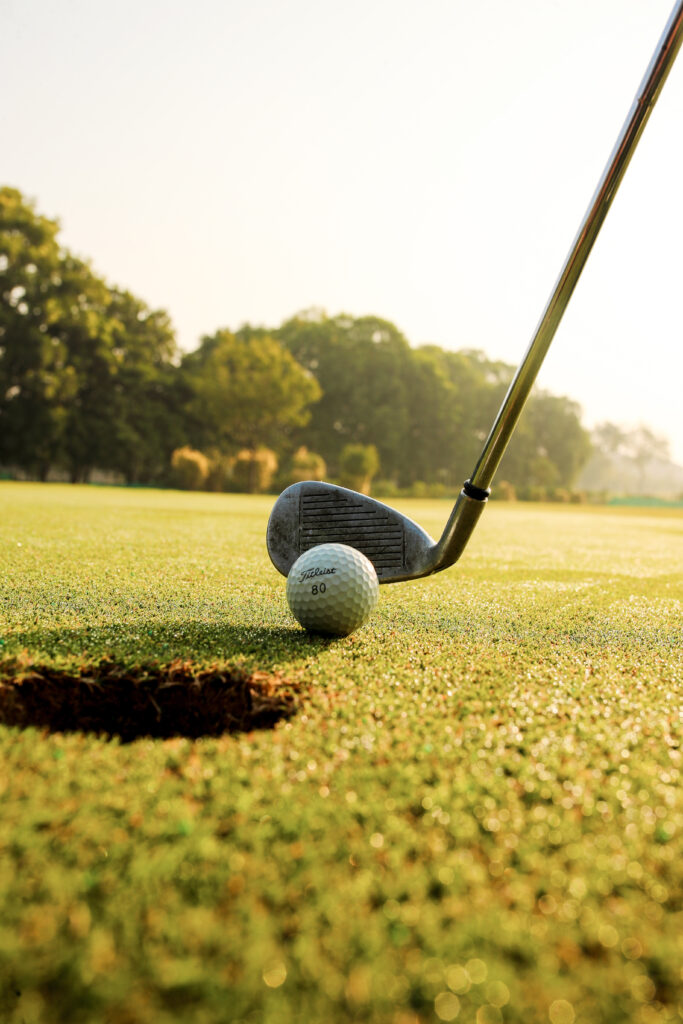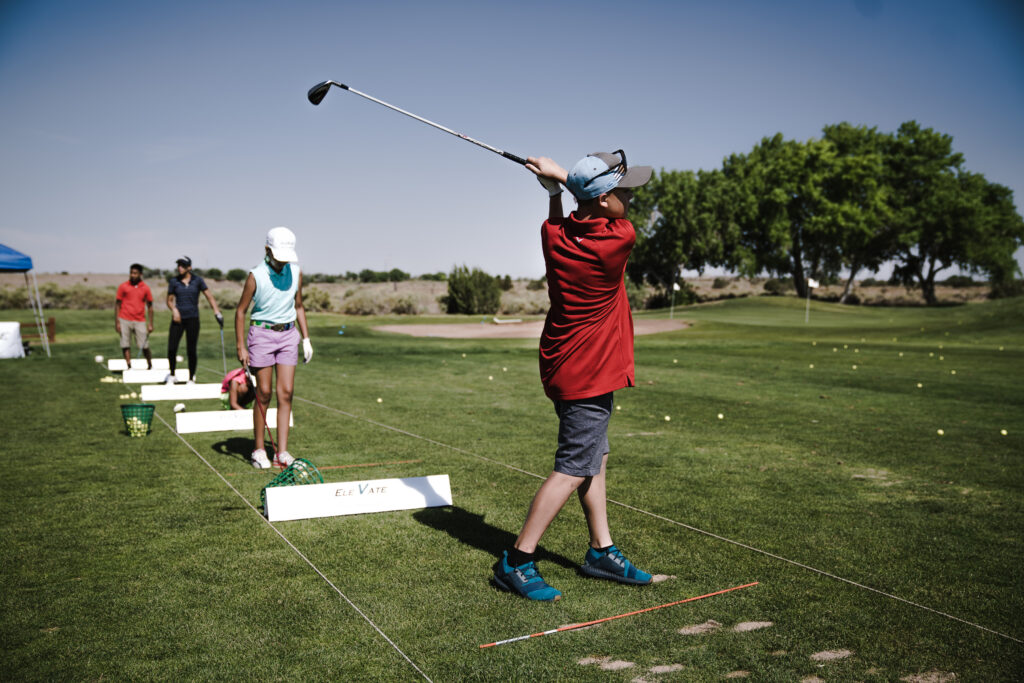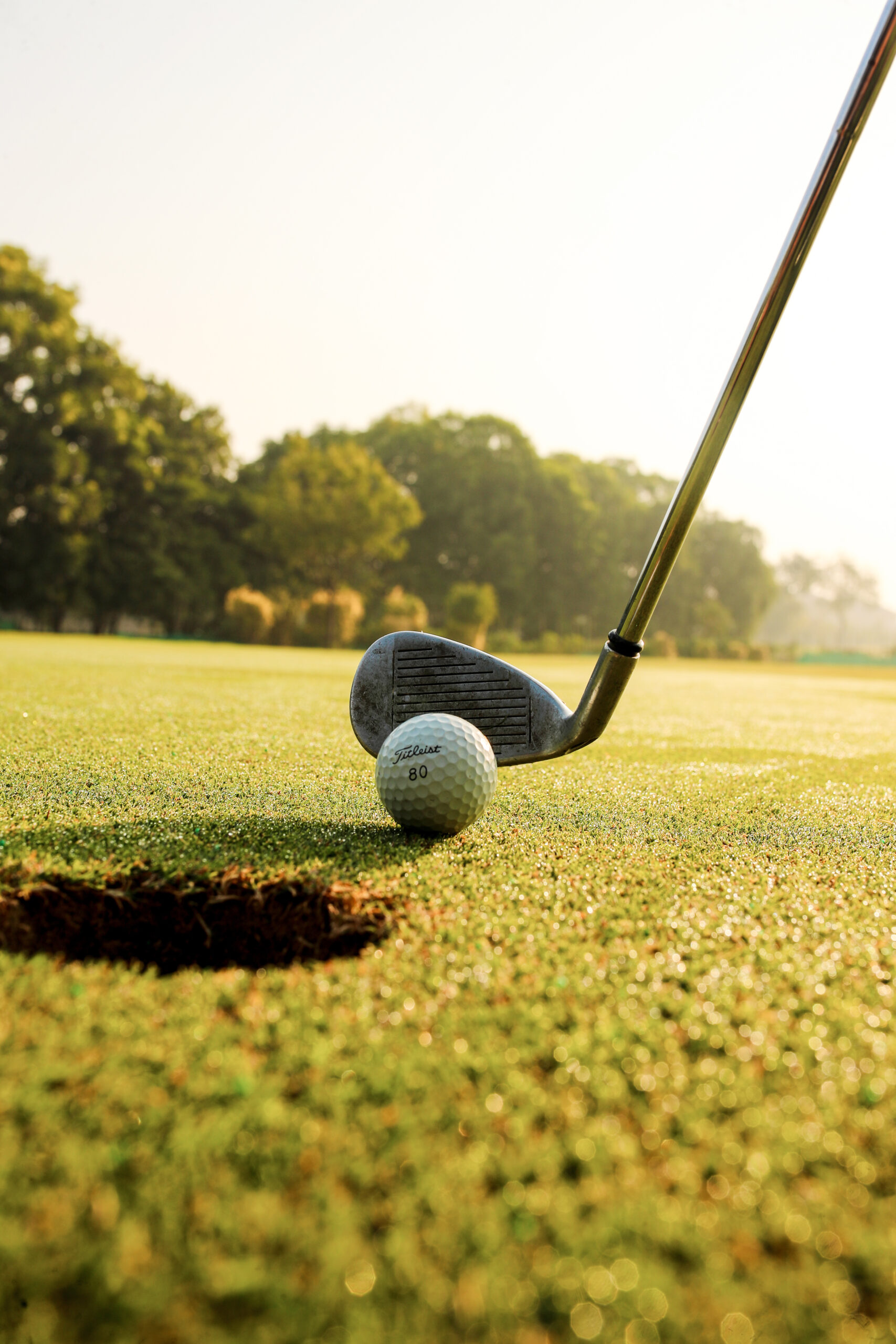Have you ever wondered what it takes to achieve a perfect golf grip? Whether you’re a seasoned golfer or a beginner taking your first swing, understanding the key elements of a proper golf grip can greatly improve your game. From the position of your hands to the pressure you apply, each detail plays a crucial role in optimizing your swing and ensuring a consistent and powerful shot. In this article, we’ll explore the essential components of a proper golf grip, providing you with valuable insights and practical tips to enhance your performance on the green. So, let’s get started and discover the secrets to mastering the art of a proper golf grip.

Hand Position
When it comes to achieving a proper golf grip, hand position plays a crucial role. There are three main hand positions to consider: neutral grip, strong grip, and weak grip.
Neutral Grip
A neutral grip is the most commonly used hand position in golf. To achieve a neutral grip, place the club in your left hand (for right-handed golfers) so that it rests diagonally across your palm, with the grip running across the base of your fingers. Wrap your fingers around the club and let your thumb rest on top of the grip. Your right hand should mirror the same position.
Strong Grip
A strong grip entails rotating your hands slightly to the right on the club for right-handed golfers (left for left-handed golfers). This position rotates the clubface closed, which can be useful in controlling a fade or slice. To achieve a strong grip, place the club in your left hand, but this time, rotate your hand so that the “V” formed between your thumb and index finger points towards your right shoulder (left shoulder for left-handed golfers). Your right hand should match this position.
Weak Grip
Conversely, a weak grip involves rotating your hands slightly to the left on the club for right-handed golfers (right for left-handed golfers). This opens the clubface and can help promote a draw. For a weak grip, start by placing the club in your left hand and rotate it so that the “V” points towards your left shoulder (right shoulder for left-handed golfers). Mirror this position with your right hand.
Finger Placement
Finger placement is another crucial aspect of a proper golf grip. There are three main finger placements to consider: V-shape grip, interlocking grip, and baseball grip.
V-shape Grip
The V-shape grip refers to the positioning of your fingers on the club. When using the V-shape grip, your left thumb and index finger, or right thumb and index finger for left-handed golfers, should form a “V” that points towards your right shoulder (left shoulder for left-handed golfers). This grip provides a secure and comfortable connection with the club.
Interlocking Grip
The interlocking grip is commonly used by golfers with smaller hands or those who struggle with grip stability. With the interlocking grip, intertwine your left pinky finger (right pinky finger for left-handed golfers) with your right index finger. This grip creates a solid link between your hands and promotes better control and stability throughout your swing.
Baseball Grip
The baseball grip, sometimes referred to as the 10-finger grip, is often favored by beginners or golfers with weaker hands. In this grip, all ten fingers wrap around the grip of the club without any interlocking or overlapping. While the baseball grip provides a natural and comfortable feel, it may sacrifice some control and stability.
Pressure
Finding the right pressure in your golf grip is essential for maintaining control and generating power. There are three pressure techniques to consider: consistent pressure, relaxed grip, and avoiding tension.
Consistent Pressure
Consistency is key when it comes to grip pressure. To achieve consistent pressure, apply the same amount of pressure with both hands throughout your grip. This ensures a balanced and even grip, allowing for a smoother and more consistent swing.
Relaxed Grip
One of the most common mistakes golfers make is gripping the club too tightly. A relaxed and loose grip is essential for allowing the club to release naturally through impact. Avoid tensing up your hands and maintain a comfortable, relaxed grip that allows for flexibility and fluidity in your swing.
Avoiding Tension
Tension in your hands and forearms can significantly impede your golf swing. To avoid tension, focus on keeping your muscles relaxed and avoid any unnecessary gripping or squeezing. A tense grip can restrict your swing, lead to inconsistent shots, and even contribute to injuries. Stay mindful of your grip pressure and strive to maintain a relaxed and tension-free grip throughout your round.
Thumb Placement
Proper thumb placement is crucial for maintaining a secure grip on the club and promoting control throughout your swing. There are three main thumb placements to consider: thumb position on top, no gap between thumb and fingers, and avoiding excessive pressure.
Thumb position on top
A common thumb placement is to position your thumb on top of the grip, parallel to the shaft. This position provides stability and control over the club, allowing for better accuracy and consistency in your shots. By placing your thumb on top, you ensure that your grip remains secure throughout your swing.
No gap between thumb and fingers
Maintaining a proper gap between your thumb and fingers is essential for achieving a solid grip. Avoid creating excessive space between your thumb and fingers, as it can lead to instability and a loss of control. Keep your thumb snug against the grip, ensuring a tight and secure connection.
Avoiding excessive pressure
While it’s important to maintain a secure grip, applying excessive pressure with your thumb can be counterproductive. Too much pressure can restrict wrist movement and impede your ability to release the club properly. Find the balance between a secure grip and a relaxed thumb, allowing for optimal control and flexibility in your swing.

Wrist Alignment
Proper wrist alignment is vital for maintaining a consistent and powerful golf swing. There are three main wrist alignments to consider: straight leading wrist, flat trailing wrist, and avoiding excessive cupping.
Straight leading wrist
To achieve a straight leading wrist, focus on keeping your left wrist flat and neutral (right wrist for left-handed golfers). Cupping or bending your leading wrist can lead to inconsistent ball striking and a loss of power. Maintain a straight leading wrist throughout your swing for better control and improved contact with the ball.
Flat trailing wrist
The trailing wrist, also known as the right wrist for right-handed golfers (left wrist for left-handed golfers), should remain flat to maintain proper wrist alignment. Avoid excessive cupping or bending of the trailing wrist, as it can result in inconsistent shots and a loss of power. Keeping your trailing wrist flat helps ensure that your clubface remains square at impact.
Avoiding excessive cupping
Cupping refers to the bending of the wrists, resulting in an arched or cupped appearance. Excessive cupping can lead to inconsistent ball striking and loss of control. Focus on maintaining a neutral and flat wrist position, avoiding any excessive cupping throughout your swing. This allows for better clubface control and a more consistent impact position.
Clubface Alignment
Proper clubface alignment is crucial for hitting straight and accurate shots. There are three key elements to consider for clubface alignment: square clubface position, alignment with grip, and avoiding a closed or open clubface.
Square clubface position
A square clubface refers to the position of the clubface that is perpendicular to the target line. To achieve a square clubface position, ensure that the leading edge of the clubface is pointing directly at your target. Proper clubface alignment is essential for hitting straight shots and maintaining control over your ball flight.
Alignment with grip
Another important aspect of clubface alignment is its relationship with your grip. The leading edge of the clubface should align with the V-shaped space created by your thumb and index finger (for right-handed golfers). By aligning the clubface with your grip, you ensure that your clubface remains square throughout your swing, promoting accuracy and consistency.
Avoiding a closed or open clubface
It’s crucial to avoid a closed or open clubface at impact, as it can significantly affect the direction of your shots. A closed clubface points to the left of your target line, promoting a hook, while an open clubface points to the right, encouraging a slice. Maintain a square clubface position throughout your swing to avoid unintentional shot shapes and achieve greater control and accuracy.

Grip Pressure
Proper grip pressure helps maintain control and stability throughout your swing. There are three key considerations when it comes to grip pressure: equal pressure with both hands, firm grip without squeezing, and balancing grip tension.
Equal pressure with both hands
When gripping the club, it’s essential to apply equal pressure with both your left and right hands. This ensures a balanced grip and promotes consistency in your swing. Avoid gripping the club too tightly with one hand and too loosely with the other, as it can lead to an inconsistent and erratic ball flight.
Firm grip without squeezing
While a firm grip is important for control, it’s essential to strike a balance and avoid squeezing the club too tightly. Maintain a firm grip without excessive tension, allowing for natural wrist and hand movement throughout your swing. Squeezing the club excessively can restrict the flow of your swing and lead to a loss of power and control.
Balancing grip tension
Finding the right grip tension is a delicate balance between control and flexibility. Too much tension in your grip can restrict your swing, while too little tension can result in a loss of control. Experiment with different grip tensions and find a balance that allows for a stable and controlled swing while maintaining fluidity and touch.
Hand Balance
Proper hand balance is crucial for achieving a consistent and effective golf grip. There are three main considerations for hand balance: equal pressure and balance between hands, avoiding dominant hand dominance, and balanced wrists.
Equal pressure and balance between hands
Maintaining equal pressure and balance between your left and right hands is essential for a proper golf grip. Avoid gripping the club too tightly with one hand and too loosely with the other. Find a balance in your grip to ensure that both hands contribute equally to your swing and promote consistency.
Avoiding dominant hand dominance
It’s common for golfers to have a dominant hand, which can result in an imbalanced grip and swing. To achieve proper hand balance, focus on minimizing the influence of your dominant hand. This can be achieved by actively engaging your non-dominant hand and ensuring that it contributes equally to your grip and swing.
Balanced wrists
In addition to hand balance, maintaining balanced wrists is crucial for a proper golf grip. Avoid excessive cupping or bending of the wrists, as it can lead to inconsistency and loss of control. Keep your wrists neutral and flat throughout your grip, allowing for optimal control and stability.
Finger Pressure
Proper finger pressure is an often-overlooked aspect of a proper golf grip. There are three key considerations for finger pressure: light finger touch, avoiding squeezing with fingers, and relaxed finger pressure.
Light finger touch
When gripping the club, it’s important to have a light touch with your fingers. The primary function of your fingers is to provide support and control, rather than gripping or squeezing the club excessively. Allow your fingers to lightly wrap around the club, maintaining a gentle touch that promotes flexibility and control.
Avoiding squeezing with fingers
Squeezing the club excessively with your fingers can hinder your ability to release the club properly and maintain control throughout your swing. Avoid gripping the club too tightly with your fingers, as it can lead to tension and restrict your swing. Instead, focus on using your fingers to provide support and control while maintaining a relaxed grip.
Relaxed finger pressure
Finding the right balance of pressure with your fingers is crucial for maintaining control and feel in your golf grip. Avoid excessive tension in your fingers and strive for a relaxed and comfortable grip. By relaxing your finger pressure, you allow for better wrist and hand movement throughout your swing, resulting in improved control and consistency.
Grip Size
Choosing the appropriate grip size is essential for achieving a proper golf grip that promotes control and comfort. There are three main considerations for grip size: appropriate grip size, customizing grip for hand size, and avoiding too small or large grips.
Appropriate grip size
Selecting the appropriate grip size is crucial for achieving a comfortable and secure grip. Grip sizes range from undersize to standard to oversize, with variations in between. It’s important to find a grip size that feels comfortable in your hand and promotes proper hand position and control.
Customizing grip for hand size
Every golfer has different hand sizes and shapes, and it’s important to consider this when selecting a grip size. Golf grips can be customized to suit individual hand sizes, ensuring a comfortable and secure grip. Consult with a professional club fitter or golf instructor to determine the optimal grip size for your hand.
Avoiding too small or large grips
Using grips that are too small or too large for your hand can greatly affect your grip stability and control. Grips that are too small may cause your hands to overwork, leading to inconsistency and loss of control. Conversely, grips that are too large can restrict wrist movement and impede your ability to release the club. Experiment with different grip sizes to find the optimal fit for your hand.
In conclusion, achieving a proper golf grip involves several key elements that contribute to control, stability, and consistency in your swing. By understanding and implementing the correct hand position, finger placement, pressure techniques, thumb placement, wrist alignment, clubface alignment, grip pressure, hand balance, finger pressure, and grip size, you can enhance your golf game and enjoy improved performance on the course. Remember to practice these elements regularly and seek guidance from a golf professional or instructor if needed. Happy gripping and happy golfing!

